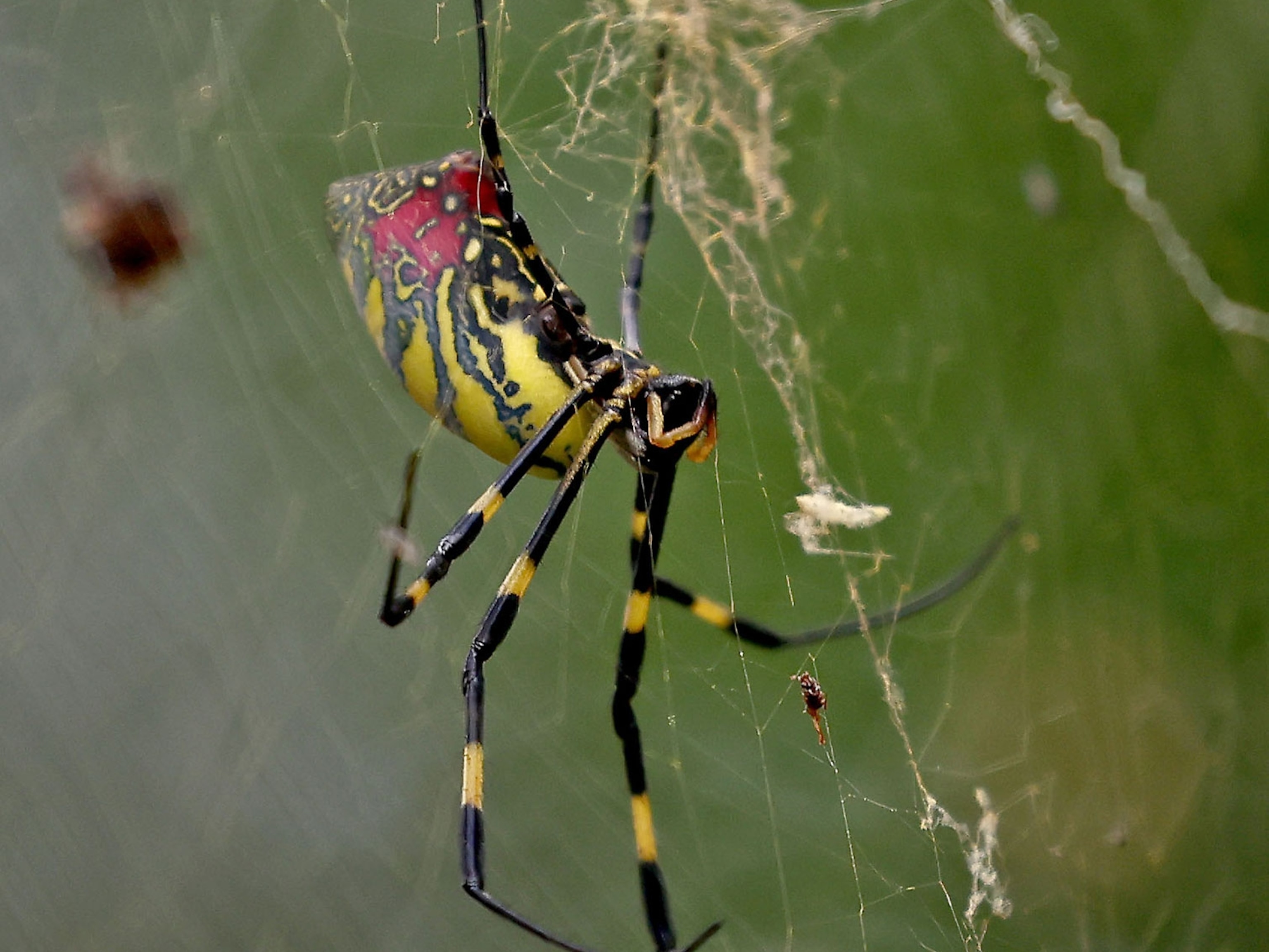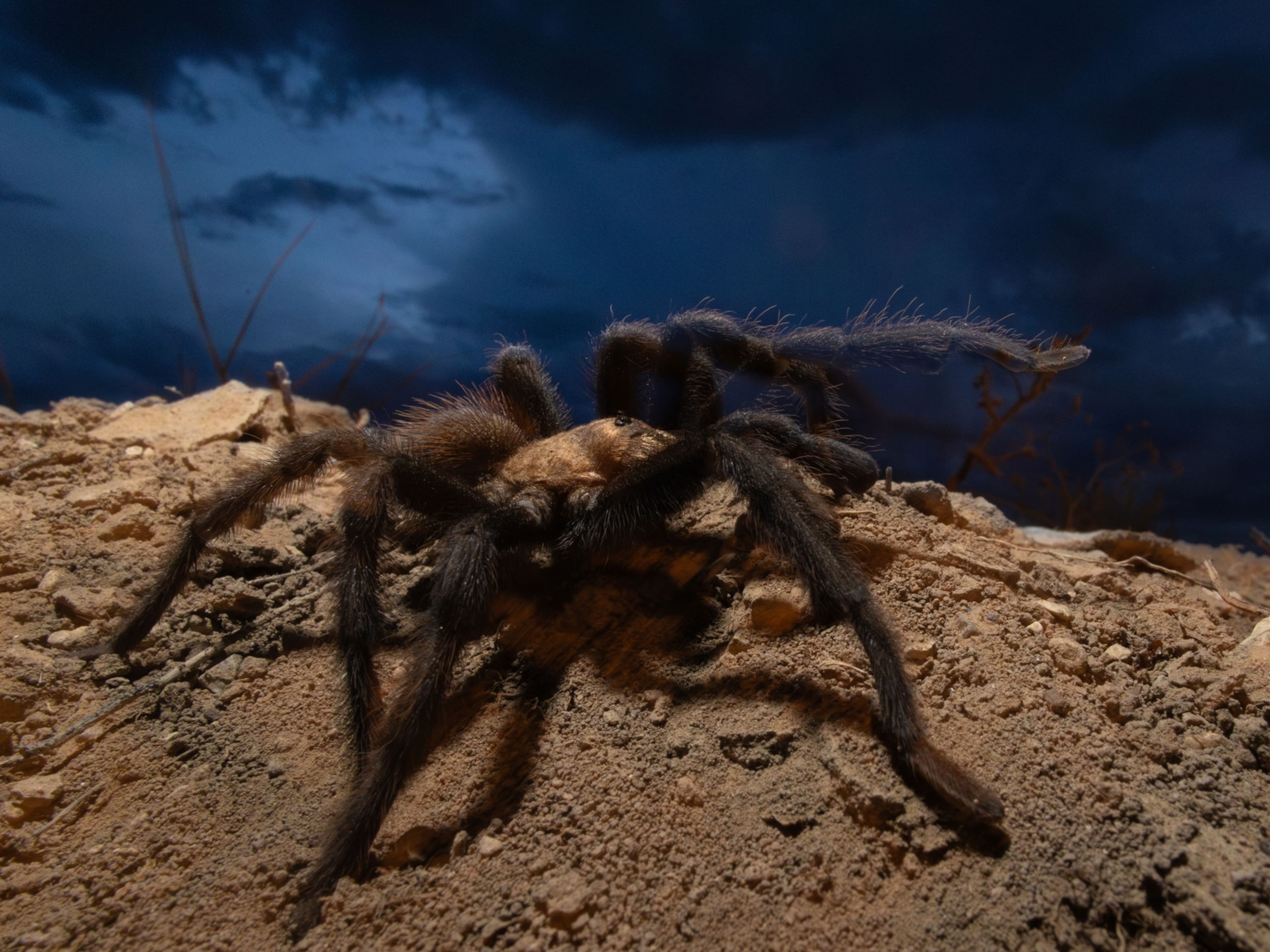Millions of Spiders Coat an Australian Town With Silk
Major flooding in the Australian state of Tasmania has forced spiders to evacuate—by using silken threads as hot-air balloons.
Record rains have fueled major floods around Launceston, the second-largest city in the Australian state of Tasmania—but forecasters probably weren’t expecting spiders to rain down as well.
In fact, trees in flooded areas outside of Launceston are now teeming with small black spiders, local news outlets report, which have coated the foliage with enormous blankets of silk.
Local resident Ken Puccetti, who photographed the webs, told Guardian Australia that “the plague” covered an area about half a mile (800 meters) long. The silk was so dense, says Puccetti, that his attempts to photograph it ended with his shoes, legs, and arms covered with silk—and the occasional spider.
The rally of high-flying spiders, known as a mass ballooning event, occurs when spiders crawl to the highest points of their habitat—say a fence pole, or a tall plant—and send out silk strands that allow them to be lifted on air currents. (Also see "Photos: World's Biggest, Strongest Spider Webs Found.")
The strands act “a little bit like a hot-air balloon," University of Akron arachnologist Todd Blackledge said in a previous interview, hence the name for the behavior. This means the spiders “go wherever the wind takes them,” allowing their populations to spread—or, in the case of the spiders in Launceston, evacuate suddenly inhospitable areas.
Mass ballooning events have occurred throughout Australia and around the world. In May 2015, spiders pulled off a similar silken stunt in Australia’s Southern Tablelands region, and in November 2015, spiders produced a half-mile sheet of silk near Memphis, Tennessee. Ballooning events also occur elsewhere in the Northern Hemisphere, including Great Britain and Pakistan. (Also see "Pictures: Trees Cocooned in Webs After Flood.")
And this isn’t the first time that flooding in Australia has spurred spiders to take to the skies. In 2012, spiderwebs blanketed the countryside of Wagga Wagga, in eastern Australia, after a week of record rain forced the spiders—and 13,000 people—to flee their homes.
In that case, ballooning allowed the spiders "to move out of places where they'd surely be drowned," Robert Matthews, a professor emeritus of entomology at the University of Georgia, said of that event.
In fact, the sheets of silk coating Launceston’s trees may reflect spiders’ previous failed attempts at ballooning away from the flooding.
Cued by favorable conditions—perhaps warm ground temperatures, which could generate updrafts—the spiders would have tried to send out their ballooning threads at more or less the same time. However, unexpectedly strong breezes could have then blown these threads back down onto the trees repeatedly, eventually creating a tangled mat.
Although a half-mile of spider silk may gross out Tasmania’s arachnophobes, the impressive feat shows "the versatility of things [spiders] can do with silk," Matthews noted.
Silk has been a "huge evolutionary breakthrough," he said, and "this is one more example of why spiders have been a successful group."
Follow Michael Greshko on Twitter.





